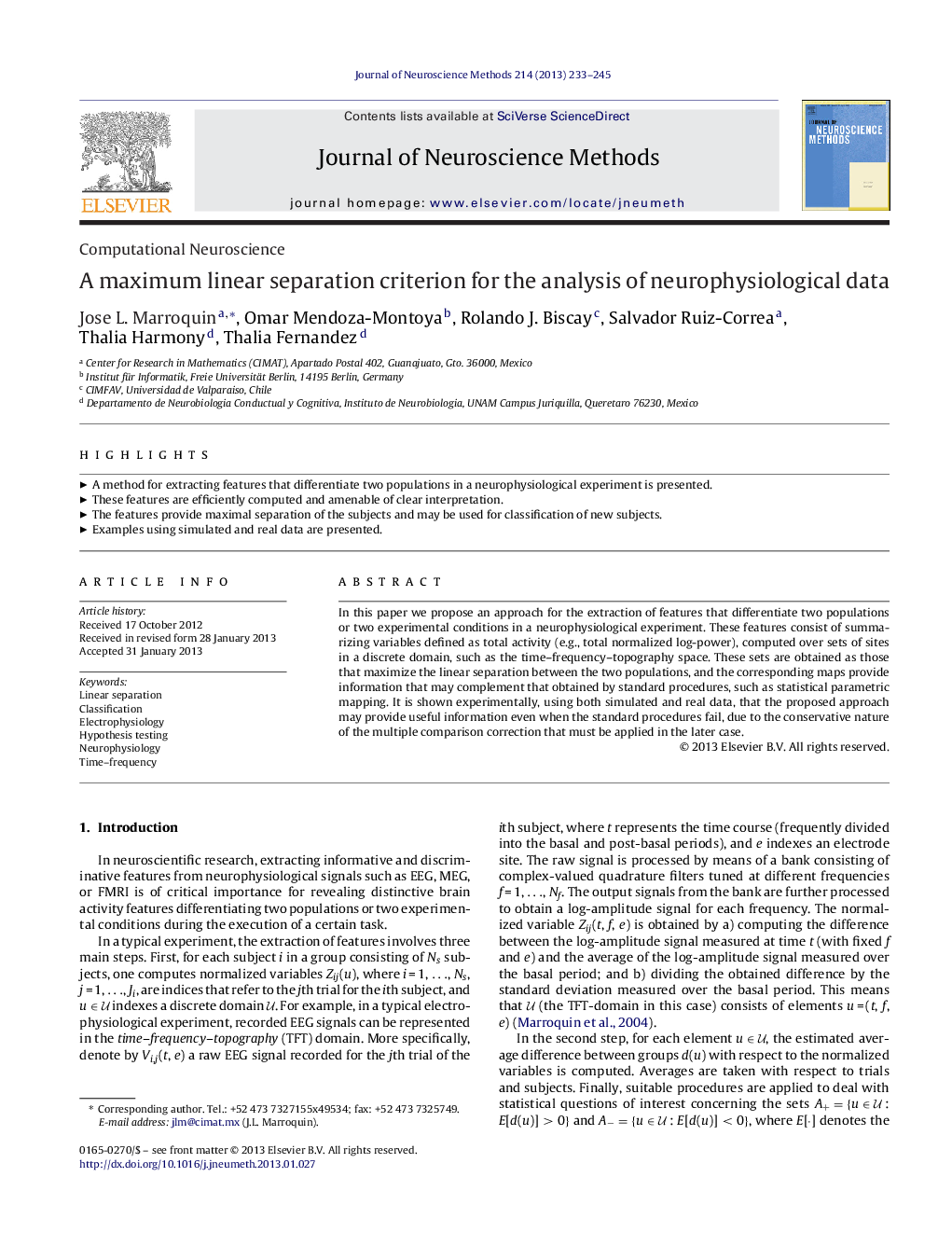| Article ID | Journal | Published Year | Pages | File Type |
|---|---|---|---|---|
| 4335170 | Journal of Neuroscience Methods | 2013 | 13 Pages |
In this paper we propose an approach for the extraction of features that differentiate two populations or two experimental conditions in a neurophysiological experiment. These features consist of summarizing variables defined as total activity (e.g., total normalized log-power), computed over sets of sites in a discrete domain, such as the time–frequency–topography space. These sets are obtained as those that maximize the linear separation between the two populations, and the corresponding maps provide information that may complement that obtained by standard procedures, such as statistical parametric mapping. It is shown experimentally, using both simulated and real data, that the proposed approach may provide useful information even when the standard procedures fail, due to the conservative nature of the multiple comparison correction that must be applied in the later case.
► A method for extracting features that differentiate two populations in a neurophysiological experiment is presented. ► These features are efficiently computed and amenable of clear interpretation. ► The features provide maximal separation of the subjects and may be used for classification of new subjects. ► Examples using simulated and real data are presented.
